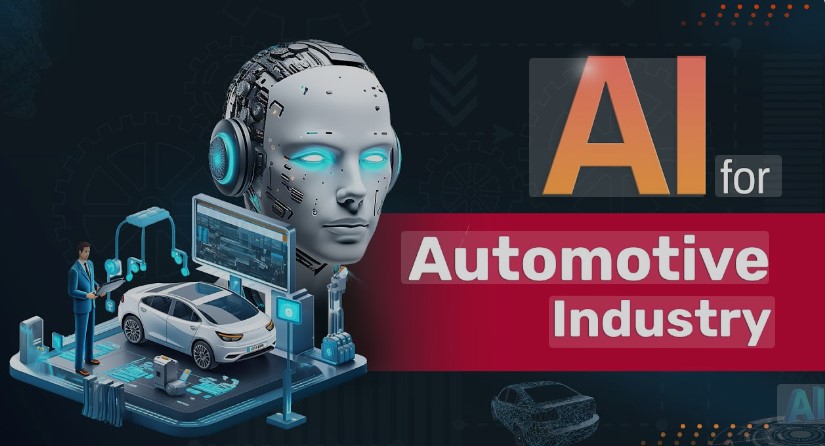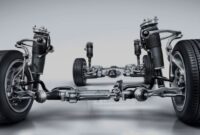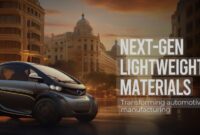AI on the Road: How Artificial Intelligence is Transforming the Automotive Industry
Introduction
The automotive industry is in the midst of a digital revolution, and at the heart of this transformation is Artificial Intelligence (AI). From autonomous driving to predictive maintenance, voice assistants to traffic optimization, AI is redefining how we interact with vehicles, how vehicles interact with each other, and how transportation systems function globally.
In 2025, AI has moved far beyond the dashboard—it is embedded in every aspect of modern mobility, optimizing safety, efficiency, and user experience. This article explores how AI is being used across the automotive ecosystem, the technologies driving this revolution, key industry players, major benefits, ethical considerations, and what lies ahead in the evolution of smart mobility.
1. A Brief History of AI in Automotive Technology
While AI might feel like a recent development, its application in vehicles began decades ago with simple rule-based systems like cruise control and ABS (Anti-lock Braking System). The evolution has followed this path:
• 1990s: Introduction of basic driver assistance (e.g., parking sensors, early adaptive cruise control).
• 2000s: Emergence of semi-autonomous driving features and onboard diagnostics.
• 2010s: Proliferation of machine learning, neural networks, and real-time data processing.
• 2020s: AI integration into core vehicle architecture, enabling full-scale automation, natural language processing, predictive analytics, and vehicle-to-everything (V2X) communication.
Now, AI powers every element of modern mobility, turning cars into intelligent machines.
2. Core AI Technologies in Automotive
2.1 Machine Learning (ML)
ML algorithms enable vehicles to learn from historical and real-time data. This includes learning driver behavior, road patterns, and sensor feedback to make intelligent decisions, such as adjusting speed or choosing an efficient route.
2.2 Computer Vision
This involves AI interpreting visual data from cameras and sensors. Computer vision is critical for:
• Lane and object detection
• Traffic sign recognition
• Pedestrian and cyclist recognition
• Parking assistance
2.3 Natural Language Processing (NLP)
Voice-activated assistants like Amazon Alexa Auto, Apple CarPlay, and Google Assistant rely on NLP to understand spoken commands, enabling drivers to control entertainment, navigation, and communication hands-free.
2.4 Sensor Fusion
Combines inputs from various sensors (lidar, radar, GPS, cameras) to create a comprehensive understanding of the vehicle’s surroundings. AI processes this data in real time to make driving decisions.
2.5 Edge AI and Real-Time Processing
To minimize latency, automotive AI runs many tasks directly on local processors (edge computing), enabling real-time responsiveness in critical situations (e.g., emergency braking, collision avoidance).
3. Autonomous Driving: The Pinnacle of AI Integration
Autonomous driving is the most high-profile application of AI in automotive. The SAE (Society of Automotive Engineers) defines six levels of driving automation:
• Level 0–2: Driver assistance (adaptive cruise control, lane keep assist)
• Level 3: Conditional automation (e.g., highway autopilot under supervision)
• Level 4: High automation (geofenced autonomous operation)
• Level 5: Full autonomy (no driver needed, anywhere, anytime)
In 2025, many vehicles operate at Level 3, while companies like Waymo, Cruise, and Baidu Apollo are testing and deploying Level 4 robotaxi services.
AI is responsible for:
• Path planning and route optimization
• Real-time object detection and classification
• Dynamic decision-making in complex environments
• Redundant safety system management
Autonomous driving wouldn’t be possible without AI’s capability to process billions of inputs per second and adapt to unpredictable road conditions.
4. AI in Advanced Driver Assistance Systems (ADAS)
ADAS features have become standard in most new cars, offering semi-autonomous functions powered by AI. Key systems include:
• Automatic Emergency Braking (AEB)
Uses AI to detect impending collisions and activate brakes automatically.
• Lane Keeping Assist (LKA)
Detects lane boundaries and gently corrects the steering to prevent lane drifting.
• Blind Spot Detection
Warns drivers of nearby vehicles using AI-enhanced sensors and cameras.
• Traffic Sign Recognition
Identifies speed limits, warnings, and stop signs using computer vision.
AI in ADAS is designed to support human drivers, not replace them, enhancing road safety and reducing driver fatigue.
5. AI-Powered Predictive Maintenance and Diagnostics
Traditionally, vehicle maintenance is reactive or schedule-based. AI enables predictive maintenance, where systems monitor the condition of components in real-time and alert the driver before a breakdown occurs.
Examples include:
• Monitoring tire wear and brake pad health
• Predicting battery degradation in electric vehicles
• Detecting engine anomalies through sound or vibration analysis
Fleet operators save significant costs by reducing unplanned downtime, while consumers benefit from enhanced safety and longer vehicle lifespans.
6. AI and Personalized User Experience
AI adapts the vehicle environment to suit individual preferences. In 2025, this includes:
• Driver profiles that remember seat position, climate control, music, and mirror settings.
• AI-based infotainment that recommends music, podcasts, or navigation routes based on past behavior.
• Health monitoring systems that track driver fatigue or stress using facial recognition and heart rate sensors, issuing alerts or adjusting cabin settings.
Companies like Mercedes-Benz (MBUX), Tesla, and NIO are setting the standard for smart, user-friendly automotive AI systems.
7. AI in Traffic Management and Vehicle-to-Everything (V2X) Communication
AI isn’t limited to individual vehicles. It plays a crucial role in traffic optimization and urban mobility planning.
7.1 Vehicle-to-Vehicle (V2V)
Cars share data about speed, position, and hazards with nearby vehicles, reducing collisions and enabling coordinated driving.
7.2 Vehicle-to-Infrastructure (V2I)
AI interprets data from traffic signals, toll booths, and smart roads to guide vehicles efficiently and avoid congestion.
7.3 AI in Traffic Management Centers
City traffic systems use AI to:
• Predict congestion
• Optimize signal timing
• Coordinate emergency vehicle priority
• Manage parking availability
The result is smarter cities, reduced emissions, and improved urban mobility.
8. AI in Manufacturing and Quality Control
Before reaching the roads, AI is transforming automotive production lines:
• Robotics powered by AI streamline assembly processes, enhancing precision and efficiency.
• AI-based inspection systems detect microscopic defects in parts, ensuring quality.
• Digital twins (virtual replicas of physical systems) are used to simulate, test, and optimize vehicle performance before production.
Brands like Toyota, BMW, and Ford employ AI in manufacturing to lower costs, increase customization, and shorten time-to-market.
9. AI and Sustainability in Automotive Design
AI contributes to environmental goals by:
• Optimizing EV battery usage and lifespan
• Designing lighter, more efficient vehicle frames
• Enhancing aerodynamics using generative design
• Reducing waste in supply chains through predictive logistics
Startups like Arrival and Canoo are using AI to build modular, sustainable electric vehicles tailored to urban transport needs.
10. Ethical Considerations and Challenges
AI introduces several complex questions that the industry must address:
10.1 Decision-Making in Crashes (The Trolley Problem)
How should an autonomous vehicle prioritize lives in unavoidable crash scenarios? Who is legally responsible for the outcome?
10.2 Data Privacy
Vehicles collect vast amounts of data. Ensuring user consent, data encryption, and ethical use is critical.
10.3 Bias in AI Models
AI systems trained on limited datasets can inherit biases, leading to unsafe or unfair outcomes. Diverse training data and inclusive design are essential.
10.4 Security Threats
AI systems can be vulnerable to cyberattacks. Automakers must build resilient AI frameworks to ensure passenger safety and system integrity.
11. Key Players in Automotive AI
Automakers
• Tesla: Leading with Autopilot and Full Self-Driving (FSD)
• Mercedes-Benz: First to launch Level 3 automation in Europe
• BMW and Audi: Heavy investment in AI user experience and driver assistance
Tech Companies
• NVIDIA: Offers Drive platform with powerful GPUs for autonomous processing
• Intel/Mobileye: Powers vision-based ADAS and robotaxi systems
• Google (Waymo): Leading in autonomous vehicle AI research
Startups
• Cruise (backed by GM)
• Aurora Innovation
• Zoox (Amazon-owned)
These firms bring innovation speed and agility, often pioneering the most advanced features.
12. The Future of AI in Automotive: 2025 and Beyond
What can we expect in the next 5–10 years?
• Level 4 autonomy to become mainstream in urban environments
• AI-powered fleet coordination for shared mobility services
• Self-healing software that identifies and corrects code faults in real-time
• Quantum computing + AI to solve ultra-complex transportation optimization problems
• AI as a mobility concierge, not just a driving assistant
As 5G and edge computing evolve, vehicles will become hyperconnected nodes in smart ecosystems, communicating continuously with each other, infrastructure, and the cloud.
Conclusion
Artificial Intelligence is revolutionizing the automotive industry, not just by enabling vehicles to drive themselves, but by transforming the entire mobility ecosystem. From smarter manufacturing and real-time maintenance to intelligent infrastructure and personalized user experiences, AI touches every part of how we move.
But with great power comes great responsibility. Ethical use, security, and inclusivity must remain priorities as we continue to build a future where humans and intelligent machines share the road.
In this intelligent future, the question isn’t just “Can cars drive themselves?” — it’s “How smart, sustainable, and safe can we make our entire mobility system?”



